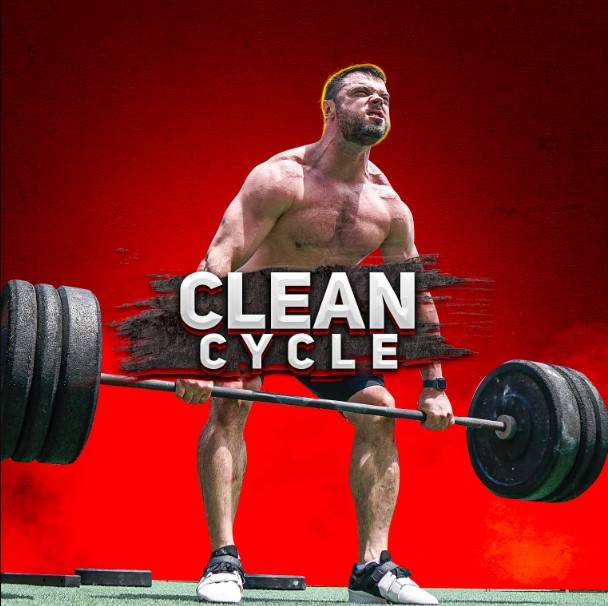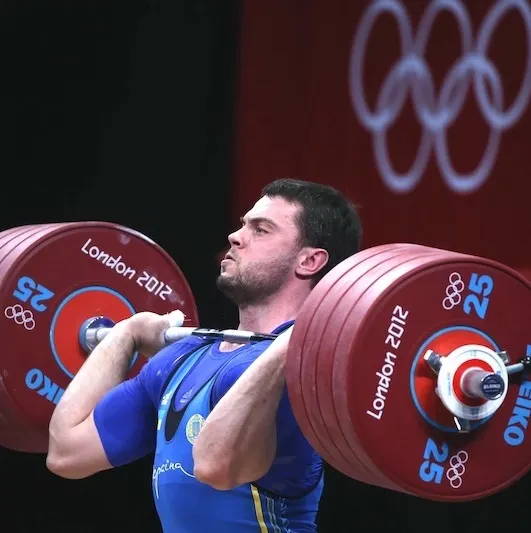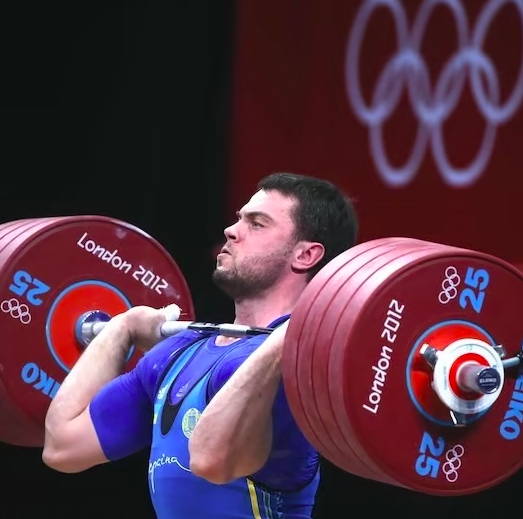The hang clean is the cornerstone exercise in Olympic weightlifting, functional fitness and athletic training. It’s known for its ability to build explosive power, strength and coordination.
But what makes the hang clean so effective is its engagement of multiple muscle groups, from your legs to your upper back in one fluid movement.?
Whether you are aiming to improve your Olympic lifts, develop functional strength for every day or enhance your performance in sports, understanding what muscles does hang clean work can help you make more informed decision during exercise selection.
What muscles does hang clean work? – This drill primarily targets the quads, hamstrings, glutes, traps, delts and calves. It also engages secondary muscles, like biceps, forearms, lats and core. This full body movement builds explosive strength, coordination, making it a staple for weightlifters, athletes and fitness enthusiasts.

In this article, we will break down the muscles worked by the hang clean, helping you optimize your training and get the most of this powerful lift.
Ready to understand why the hang clean is such a game changer for building explosive strength and power? Let’s dive in!
Primary Hang Clean Muscles Worked
1. Quadriceps (Front Thighs)
The quads are responsible for knee extension during the explosive portion of the hang clean. As you lower into the hang position, your quads are controlling the degree of knee flexion. This muscle group is essential for generating the power during the second pull and full extension phases needed to move the bar quickly.
2. Hamstrings and Glutes
The posterior chain, especially the hamstrings and glutes is heavily involved in the hang clean. These muscles are crucial for hip extension, which occurs during the second pull. A powerful hip drive translates to a strong and efficient clean, helping you lift more weight with better control.
3. Trapezius (Upper Back)
Your traps are key to the stable catch during the clean. As you perform full extension your traps engage to stabilize the upper back before the catch. Strong traps improve overall stability during the movement.
4. Deltoids (Shoulders)
While the shoulders aren’t the primary movers, they stabilize the bar during the catch phase. Once you receive the bar in the front rack position, your delts work hard to stabilize the bar and keep your upper body in control.
5. Calves (Gastrocnemius & Soleus)
Your calves may not be the most noticeable muscle group during the hang clean, but they are crucial for a balance control required for the jump. As you extend through your hips, your calves help complete the lift by contributing to the final push.

Secondary Muscles Activated
1. Biceps & Forearms
2. Core (Abdominal & Lower Back)
3. Lats (Latissimus Dorsi)

How Hang Clean Benefits Muscle Development?
✅ Full Body Impact
✅ Power Development
The explosive nature of hang clean develops fast-twitch muscle fibers, which are essential for power production. This exercise may increase muscle mass in your legs, hips and upper body, enhancing both strength and speed. It’s not just about adding weight on the bar – properly executed hang cleans will increase muscle definition and improve overall athleticism.
Follow us!

FREE

FREE
Get a 2-week Weightlifting Program as a bonus for the subscription to kickstart your training plan!
✅ TUT
✅ Eccentric Phase
✅ Neuromuscular Coordination
Crush Your CLEAN PR in 5 Weeks! 🏋️
Achieve:
🏅New CLEAN Records.
💪Master CLEAN variations.
🏋️♂️Focus on back and leg strength.
🎯Specific skills and drills for your CLEAN.
Highlights:
📆 5 Days / Week
✅ Varied Lifts
💪 Strength & Technique
🔥 Healthy Warm-Ups
Elevate your CLEAN game today! 💥
6 Hang Clean Variations & Muscle Focus
1. Hang Power Clean
The hang power clean shifts the focus more toward your traps, shoulders and upper back by catching the bar in a higher position. This variation demands more upper-body strength and improves your ability to generate force quickly.
2. Hang High Clean Pull
The hang clean pull is an excellent variation for targeting the traps and upper back. It helps build the upper body pulling strength needed for an efficient clean.
3. Clean + Hang Clean Complex
In this complex, you perform initial rep as a regular clean and then make all the rest from the hang position.
4. Clean Pull + Hang Clean Complex
Good variation with focus on strength endurance with primary legs and back fatigue and the cleaning from the hang.
5. Hang Clean + Front Squat Complex
This sequence is a common guest in the functional fitness WODs and competitions. After performing 2-3 reps of the Hang Clean lifter continue to front squat in unbroken mode – very challenging stuff.
6. Hang Clean + Jerk Variations Complex
Depending on the goals and the planned intensity – it can be a regular Split Jerk or Push Jerk or even Push Press if the working weight in the bar is relatively low.
Depending on the goal, you can also set different hang position:
- just off the platform;
- below the knee;
- above the knee;
4 Common Mistakes and Muscle Engagement Issues
❌ Poor Hip Drive
❌ Using Too Much Arm Pull
❌ Not Engaging the Core
❌ Inconsistent Bar Path

Conclusion
References:
- Helland C, Hole E, Iversen E, Olsson MC, Seynnes O, Solberg PA, Paulsen G. Training Strategies to Improve Muscle Power: Is Olympic-style Weightlifting Relevant? Med Sci Sports Exerc. 2017 Apr;49(4):736-745. doi: 10.1249/MSS.0000000000001145. PMID: 27820725.
- Geisler S, Havers T, Isenmann E, Schulze J, Lourens LK, Nowak J, Held S, Haff GG. Effects of Expertise on Muscle Activity during the Hang Power Clean and Hang Power Snatch Compared to Snatch and Clean Pulls – An Explorative Analysis. J Sports Sci Med. 2023 Dec 1;22(4):778-789. doi: 10.52082/jssm.2023.778. PMID: 38045750; PMCID: PMC10690512.
- Kipp K, Malloy PJ, Smith JC, Giordanelli MD, Kiely MT, Geiser CF, Suchomel TJ. Mechanical Demands of the Hang Power Clean and Jump Shrug: A Joint-Level Perspective. J Strength Cond Res. 2018 Feb;32(2):466-474. doi: 10.1519/JSC.0000000000001636. PMID: 27669182.
- Takei S, Hirayama K, Okada J. Comparison of the Power Output Between the Hang Power Clean and Hang High Pull Across a Wide Range of Loads in Weightlifters. J Strength Cond Res. 2021 Feb 1;35(Suppl 1):S84-S88. doi: 10.1519/JSC.0000000000003569. PMID: 32149888.
- Szafraniec R, Bartkowski J, Kawczyński A. Effects of Short-Term Core Stability Training on Dynamic Balance and Trunk Muscle Endurance in Novice Olympic Weightlifters. J Hum Kinet. 2020 Aug 31;74:43-50. doi: 10.2478/hukin-2020-0012. PMID: 33312274; PMCID: PMC7706638.
- Dinsdale AJ, Bissas A. Eliciting Postactivation Potentiation With Hang Cleans Depends on the Recovery Duration and the Individual’s 1 Repetition Maximum Strength. J Strength Cond Res. 2021 Jul 1;35(7):1817-1824. doi: 10.1519/JSC.0000000000003085. PMID: 30844992.
- Photos by Torokhtiy Media Team.
Why Trust Us?
The product testing process is described in more detail here.
Experience: 21 years
Best Results: Snatch – 200 kg,
C&J - 240 kg
My name is Oleksiy Torokhtiy. I am a professional athlete with 20 years of experience in Olympic weightlifting. I have won multiple European, and World titles and have taken part in two Olympic Games (Beijing 2008, London 2012).
After finishing my career, I have committed myself to coach, and as of 2022, I’ve hosted 200+ weightlifting seminars all over the globe. I’m the founder of an international sportswear and accessories brand, Warm Body Cold Mind (my motto), author, and creator of a series of training programs and eBooks.
If you have any questions/suggestions/any other inquiry, you can reach out to us via email - reviews@torokhtiy.com




